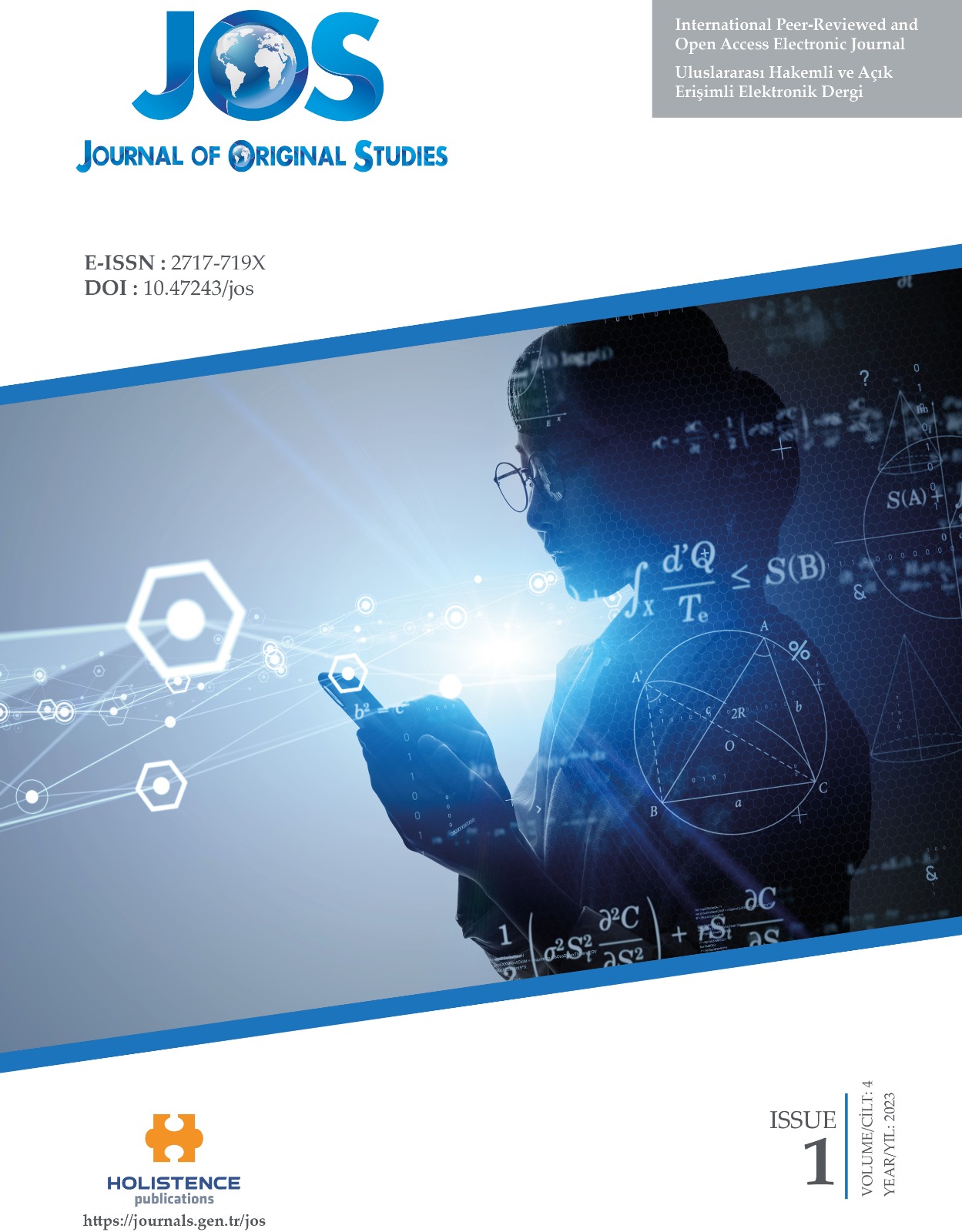Honey Production Modeling in Turkey, China and Iran by Artificial Neural Networks
DOI:
https://doi.org/10.47243/jos.1926Keywords:
Artificial Neural Networks, Activation Function, HoneyAbstract
The aim of this study is to model and predict the amount of honey production by artificial neural networks (ANN) in China, Turkey and Iran, where the most honey is produced in the world. The study covers the data for the period of 1961-2021 for Turkey, 1961-2020 for China and Iran. In the ANN method, the Hyperbolic Tangent Function was used as the activation function. The effectiveness of the developed model was determined by statistics such as Mean Error Squares (MSE) and Mean Average Error (MAE). MSE values for honey production modeling in China, Turkey and Iran were 658081803, 21877686 and 11754352, respectively, while MAE values were 19982, 3803 and 2854, respectively. According to the foresight results obtained by ANN, honey production is expected to be 536651-543767 tons in China between 2021-2030, 77486-81501 tons in Iran, and 106772-112778 tons in Turkey between 2022-2030. It is hoped that the amount of honey production in these countries will continue with ups and downs and will be more than today's production. It has been seen that the ANN method gives successful results in production modeling.
Downloads
References
AJİBOLA A, CHAMUNORWA JP & ERLWANGER KH. (2012). Nutraceutical values of natural honey and its contribution to human health and wealth. Nutrition and metabolism 9: 1-12.
ALP, S. & ÖZ, E. (2019). Makine Öğrenmesinde Sınıflandırma Yöntemleri ve R Uygulamaları. Nobel Akademik Yayıncılık, Ankara.
BOGDANOV S. (1999). Harmonised methods of the international honey commission. Swiss Bee Research Center, FAM, Liebefeld, CH-3003 Bern, Switzerland.
ÇAYIROĞLU, İ. (2015). İleri Algoritma Analizi-5 Yapay Sinir Ağları. http://www.ibrahimcayiroglu.com/Dokumanlar/IleriAlgoritmaAnalizi/IleriAlgoritmaAnalizi-5.Hafta-YapaySinirAglari.pdf
ELMAS, Ç. (2003). Yapay Sinir Ağları, Birinci Baskı, Ankara: Seçkin Yayıncılık.
FAO, ( 2022). Food and Agriculture Organization of the United Nations. Honey production. https://www.fao.org/faostat/en/#data/QCL. Accessed to: 23.07.2022
https://biruni.tuik.gov.tr/medas/?kn=101&locale=tr. Accessed to: 01.08.2022
KAASTRA, I., BOYD, M. (1996). Designing a neural network for forecasting financial and economic time series. Neurocomputing, 10, 215-236
MACHADO DE-MELO AA, ALMEIDA-MURADIAN LBD, SANCHO MT & PASCUAL-MATE, A. (2018). Composition and properties of Apis mellifera honey: A review. Journal of Apicultural Research 57, 5-37.
NIGUSSIE K, SUBRAMANIAN PA & MEBRAHTU G (2012). Physicochemical analysis of Tigray honey: An attempt to determine major quality markers of honey. Bulletin of the Chemical Society of Ethiopia 26.
ÖZTEMEL, E. (2012). Yapay Sinir Ağları. Papatya Yayıncılık, İstanbul.
ÖZVEREN, U. (2006). Pem Yakıt Hücrelerinin Yapay Sinir Ağları ile Modellenmesi. Yayınlanmamış Yüksek Lisans Tezi, İstanbul: Yıldız Teknik Üniversitesi Fen Bilimleri Enstitüsü.
SINGH, K. P., BASANT, A., MALIK, A. & JAIN, G. (2009). Artificial neural network modeling of the river water quality-A case study. Ecological Modelling, 220(6), 888-895.
STERN, H. S. (1996). Neural networks in applied statistics. Technometrics, 38(3), 205-214.
TÜİK, 2019. Hayvansal Üretim İstatistikleri. Doğal Bal ve Ton. Türkiye İstatistik Kurumu.
WHITE, Jr. JW. (1978). Honey. Advances in food research, 24, 287-374.
YAVUZ, S. & DEVECİ, M. (2012). İstatiksel Normalizasyon Tekniklerinin Yapay Sinir Ağın Performansına Etkisi. Erciyes Üniversitesi İktisadi ve İdari Bilimler Fakültesi Dergisi, 40, 167-187.
Downloads
Published
How to Cite
Issue
Section
License
Copyright (c) 2023 Holistence Publications

This work is licensed under a Creative Commons Attribution 4.0 International License.
When the article is accepted for publication in the Journal of Orijinal Studies, authors transfer all copyright in the article to the Holistence Academy Ar-Ge Yazılım Yayıncılık Eğitim Danışmanlık ve Organizasyon Ticaret Ltd. Şti.The authors reserve all proprietary right other than copyright, such as patent rights.
Everyone who is listed as an author in this article should have made a substantial, direct, intellectual contribution to the work and should take public responsibility for it.
This paper contains works that have not previously published or not under consideration for publication in other journals.














